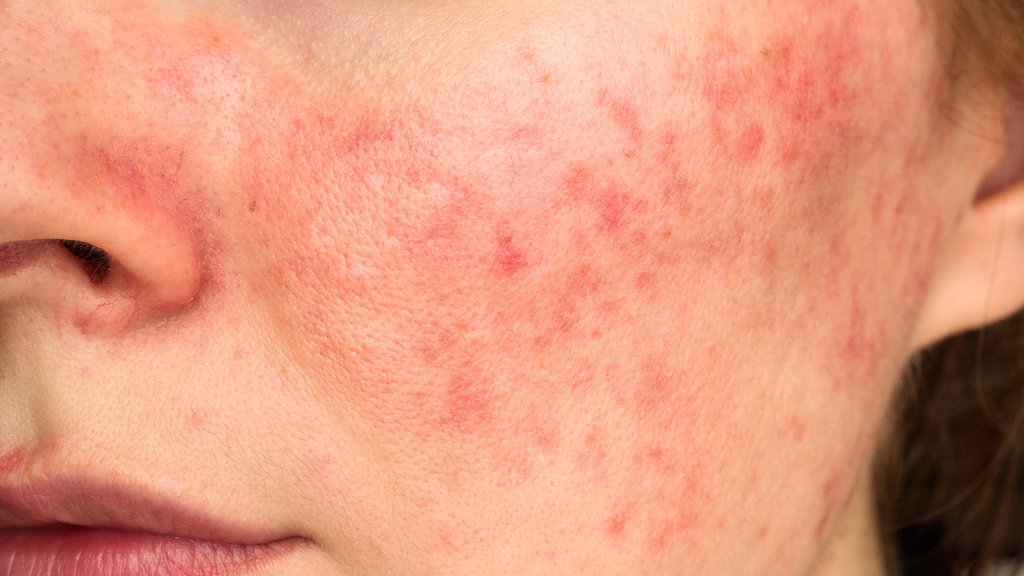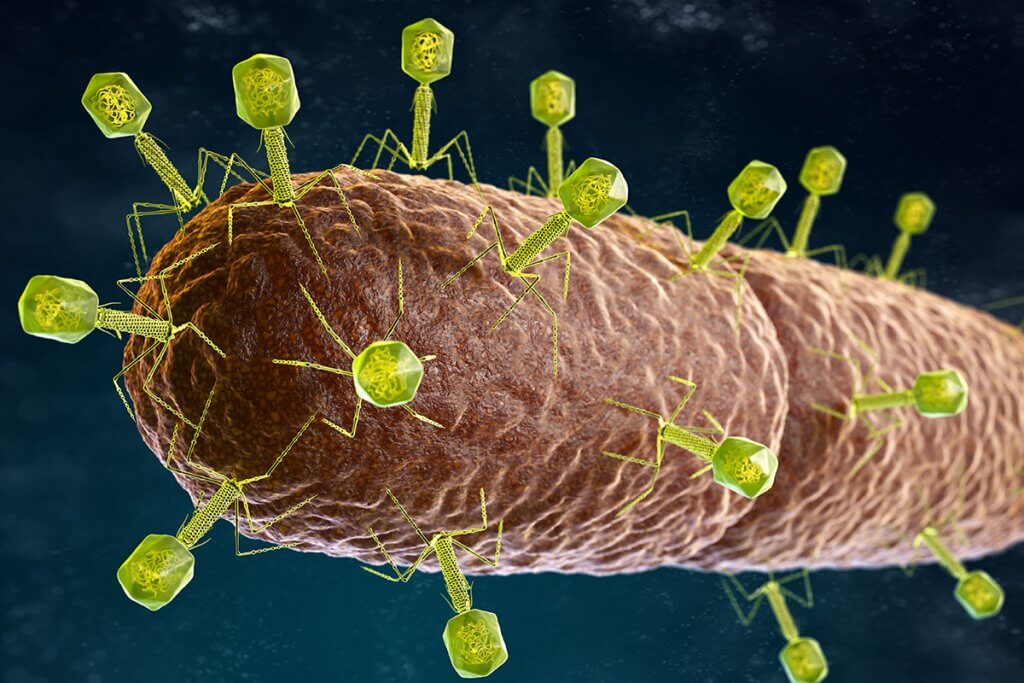Reduziere Rosacea
mit Sanubiom SkinCare Protect mit Phage Technology
- REDUZIERT Rötungen und Juckreiz
- FÖRDERT das Gleichgewicht der Haut
- STÄRKT die Hautschutzbarriere
Rosacea

External treatment with creams or a change in diet is no longer sufficient in severe cases of rosacea. In these cases, antibiotic therapy is the first option for alleviating the symptoms of rosacea.
However, as treatment with these aggressive drugs does not always make sense, other options such as phage technology should also be considered.
In this article, we explain which antibiotics are frequently used for rosacea, why this treatment method is not always appropriate and what alternative options are available.
If the symptoms of rosacea such as papules and pustules or skin changes are particularly pronounced and can no longer be treated with simple creams, many dermatologists recommend antibiotic therapy.
Metronidazole is an antibiotic that alleviates inflammatory processes and is very often used for rosacea.
The medication is added to creams or lotions and applied thinly to areas of skin where papules are forming.
The products should be used 1-2 times a day and the eyes or mucous membrane areas should be generously avoided to prevent side effects.
mit Sanubiom SkinCare Protect mit Phage Technology
Probiotic
Skin protection
Another antibiotic that is frequently used in rosacea patients is doxycycline, which has an anti-inflammatory function similar to metronidazole. It is often used in low doses for rosacea so as not to further weaken the skin microbiome.
It is administered orally in the form of capsules. As it is distributed throughout the entire organism, side effects can occur.
It should therefore only be used in severe cases, such as rosacea fulminans, if external treatment is ineffective.

In the phase III study “Interventions for Rosacea” conducted in 2017 1 a research group consisting of Ester J van Zuuren, Zybs Fedorowicz and Prof. Dr. Med. M D van der Linden investigated the effect of various drugs and antibiotics on rosacea.
It was confirmed that both metronidazole and doxycycline were significantly more effective against rosacea symptoms such as papules and pustules than the placebo preparation administered to the control group.
This confirmed the effect of antibiotics in the treatment of rosacea.
Rosacea therapy using antibiotics has proven to be very effective in the treatment of chronic inflammatory papules and pustules.
However, other rosacea symptoms such as telangiectasia, i.e. red, inflamed veins on the face, could not be alleviated.
Studies have also shown a high recurrence rate after discontinuation of treatment with tetracyclines. 2
The only approved systemic preparation of doxycycline to date also only contains a low dose of 40 mg. However, studies show that the desired antimicrobial effect cannot be achieved with this low dosage.3
It should also not be neglected that antibiotic therapy cannot act specifically against one bacterial population, but always attacks and weakens the microbiome of the gut and skin.
Bacteriophages are bacteria eaters that specifically fight bacteria and can thus treat infections.

In contrast to antibiotics, they do not attack the intestinal flora, thus avoiding annoying side effects.
Phage application for rosacea is therefore a good alternative to treatment without antibiotics.
With the help of phages, skin diseases can not only be treated gently, but above all very effectively and the bacterial balance restored.
In addition to the use of phages, there are other methods of avoiding antibiotic therapy.
In addition to a general adjustment of diet and lifestyle habits, medications such as azelaic acid or the newly developed active ingredient brimonidine are recommended.
Since 2014, a gel with the active ingredient brimonidine (Mirvaso) has also been used to treat facial redness in rosacea patients.
It causes the small blood vessels in the skin to constrict, which significantly reduces the redness in around one in four people treated.
In contrast to most medications, Brimonidine does not combat papules, but rather telangiectasias on the face. The effect sets in after just 30 minutes and very rarely causes any disturbing side effects.
Azelaic acid has a similar effect to metronidazole. It kills bacteria and thus inhibits inflammation.
Creams containing azelaic acid can significantly improve the appearance of the skin and heal pustules or redness when used daily.
As a rule, there are no side effects. However, there is no guarantee that the medication is effective.